Einleitung
In dieser Anleitung lernst du, das Yeti Mikrofon von Blue zu zerlegen.
Werkzeuge
-
-
Als Erstes solltest du das Gummiteil aus der Halteraufnahme entfernen. Dies funktioniert am besten mit einer Pinzette oder einem kleinen Schlitzschraubenzieher. Danach kannst du die drei Schrauben mit einem kleinem Kreuzschlitzschraubendreher (PH1) #1 entfernen.
-
-
-
Die 4 äußeren Knöpfe entweder mit deinen Fingern oder vorsichtig mit einer Zange entfernt werden.
-
-
-
Jetzt kannst du vorsichtig den kompletten Mikrofonmechanismus aus der äußeren Hülle entfernen. Unten kannst du den 3,5mm Klinken-Stecker und den USB Stecker erkennen. Diese können nun falls nötig ersetzt werden.
-
-
-
Schaue nun in Richtung des Filter-Gewebes. Hier siehst du vier #0 Kreuzschlitzschrauben. Entferne diese vorsichtig, damit sich das Filter-Gewebe entfernen lässt. Nun kannst du die drei Kabelsets sehen, jeweils ein Set pro Kondensator. Sie zeigen zur Seite, daran erkennt man, dass es ein omnidirektionales Mikrofon ist. (kein Richtmikrofon)
-
-
-
Falls du die Mikrofonabdeckung von der Platine abklemmen musst, achte auf die Verbindungen.
-
Hier sind drei Kondensatoren vorhanden, daher auch 3 Verbindungsdrahtpaare zur Platine, jedes hat seine eigene Farbe (schwarz/weiß, schwarz/rot, schwarz/blau).
-
Um dein Gerät wieder zusammenzubauen, folge den Schritten in umgekehrter Reihenfolge.
24 Kommentare
And what if i want to do the opposite?
For example, you removed the down part of the yeti, I wanna remove just the top. How can I do that?
Dino -
You have to remove the bottom to unscrew the top from the inside.
this is a bit of a long shot. but any idea on a replacement part# / source for the 3.5mm barrel jack on one of these?
Joe Romo -
Try searching on e.g. ebay for “3 pin pcb mount female 3.5mm jack”
The plug is a standard part, so it should be readily available. I replaced my plug with a scavanged part that I happened to have on hand!
Anton -
@ Joe
Sorry I don’t.

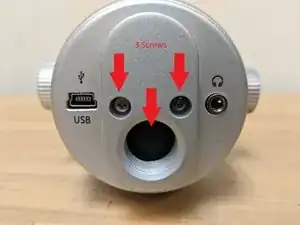
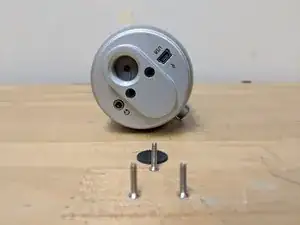
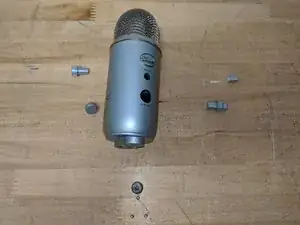
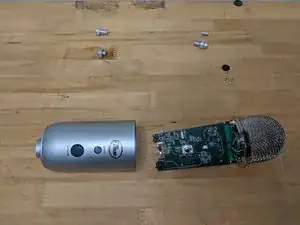
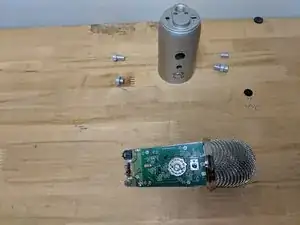
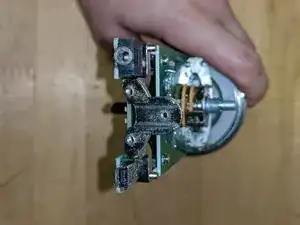
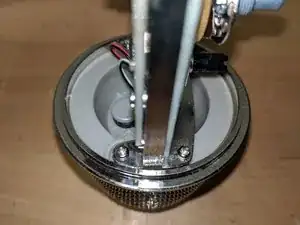
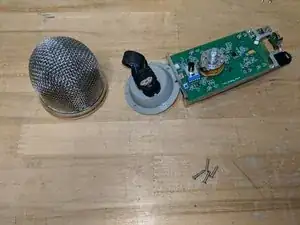
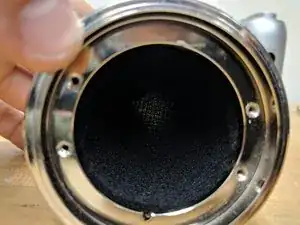
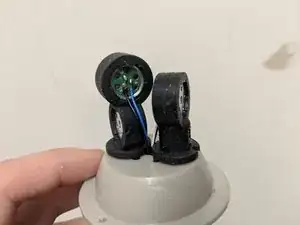
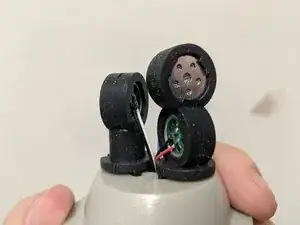
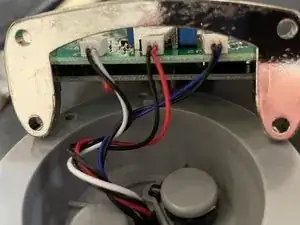
Do you know the measurements of the screws? I was looking to take mine apart to resolder the connections and realized I am missing them. Maybe that’s why my audio crackles.
Ryan Fujimoto -
On black model there is a sticker to remove and 2 of the screws are hidden beneath.
Branden Rush -